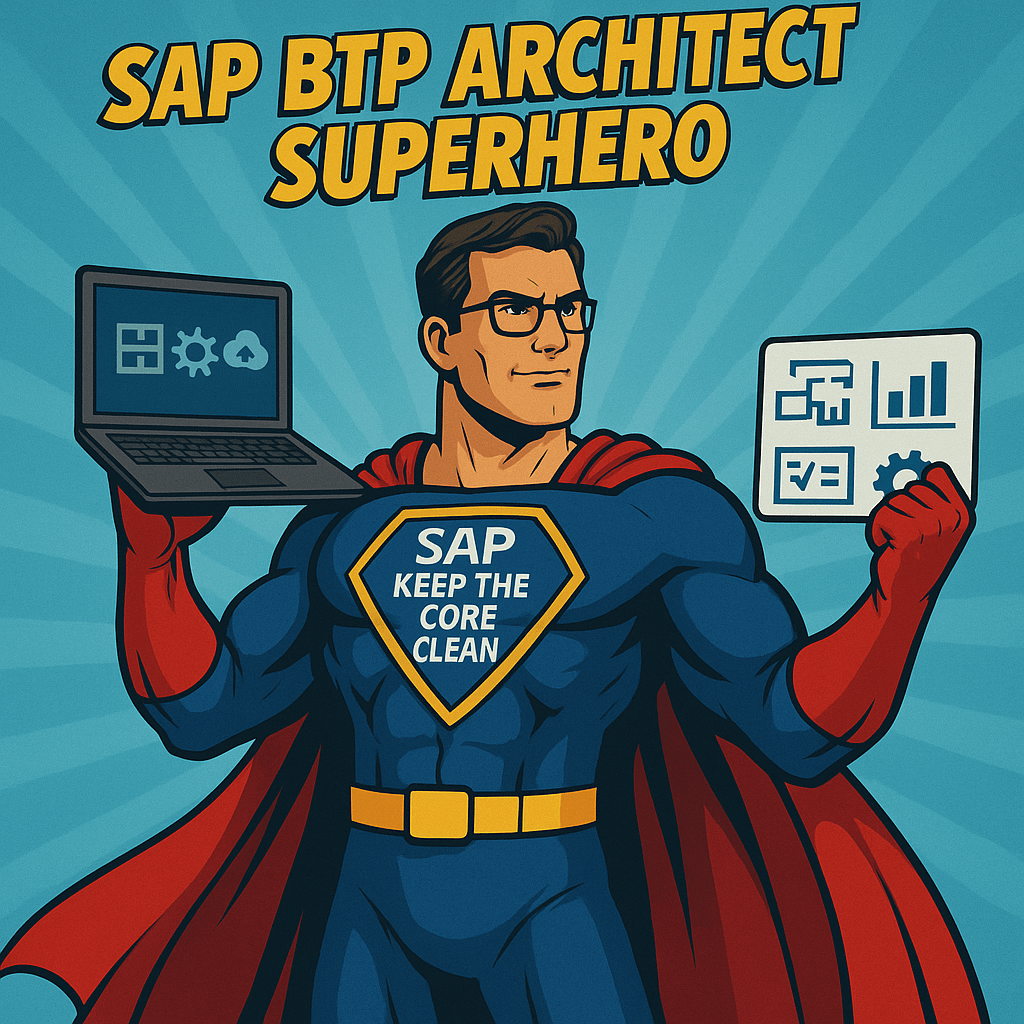Being a BTP (Business Technology Platform) Solution Architect is an exciting role. You get to design, build, and optimize solutions that bring real value to businesses. But it also comes with its challenges. Based on my experience, here are my top ten tips, ranked in descending order of importance, starting with #10.
10. Document Everything
This one might come as an obvious. A well-documented solution is easier to maintain and scale. I’ve learned the hard way that without proper documentation, even the best designs can become nightmares down the road. Make sure to document your architecture, integrations, security configurations, and decisions so that future teams can easily understand and build upon your work. Identify RACIs and accountability as early as possible.
9. Stay Updated with SAP Roadmaps
SAP is constantly evolving, and what’s relevant today may be outdated tomorrow. I make it a habit to follow SAP Roadmaps, attend TechEd, and actively follow updates within the SAP community. Keeping up with the latest changes ensures that your designs are future-proof and aligned with SAP’s best practices.
8. Think UX, Not Just Backend
A great solution isn’t just about the backend – the user experience matters too. I’ve seen many projects fail not because of poor technical design but because users found the system hard to use. Always ensure that the applications you build have a great UI/UX. SAP Fiori and SAP Build can help create a seamless experience. Design the UX and prototypes first, especially with the end users. Focus on solving their pain points, not just what IT wants. Leverage third party tools such as Balsamiq, Powerpoint, Excel to rapidly create experiences and demo to end users to make sure you’re on the right track.
7. Leverage AI and Automation
BTP opens the door to a lot of new possibilities with AI/ML, IoT, blockchain, native mobile apps, b2b portals, data lakes, automation, hyperscalers, and so many more services that can be integrated into the solution. The breadth of knowledge across SaaS, PaaS, IaaS, and various enterprise services is crucial. It’s good to regularly study and keep knowledge as up to date as possible. The more you know, the better you can design innovative solutions.
6. Keep Performance and Scalability in Mind
Design your solutions with performance in mind. Whether it’s using caching, optimizing database queries, or scaling applications properly, performance tuning is a key skill every BTP Architect should have. A slow system will frustrate users and defeat the purpose of your solution.
5. Security is Non-Negotiable
Security isn’t just the job of the security team. As a solution architect, you need to think about authentication, authorization, data security, and compliance. Familiarize yourself with Identity Authentication, Authorization (IAS/IPS), and BTP’s security best practices. A system is only as strong as its weakest security point.
4. Master Integration Patterns
A huge part of being a BTP Architect is integrating different systems. Learn about event-driven architecture, APIs, OData, SAP Integration Suite, and different messaging patterns. Good integration design ensures smooth data flow and future scalability. The ability to connect SAP and non-SAP systems effectively can make or break a project.
3. Think Clean Core for S/4HANA Projects
For S/4HANA projects, clean core and possibilities with BTP are really important. You need to factor in the depth of classic extensibility with the breadth of BTP while designing customizations for S/4. Avoid over-customization inside S/4HANA and use BTP for extensions instead. This keeps the core system clean and makes upgrades easier. Use side-by-side extensibility through CAP (Cloud Application Programming Model) or RAP (Restful ABAP Programming Model) rather than modifying SAP core.
2. Balancing Budget and Innovation is an Art
Budget is always a challenge. Customers want more for less, and as architects, we need to balance budget constraints while delivering innovation. Break down solutions into incremental phases and MVPs. Prove value early and grow incrementally with more funding. Focusing on value is very, very important.
1. Always Ask WHY
The most important tip I have is asking the question why? What are we being asked to design, why exactly is it needed, what value does it create for the business, and are we solving the right problem? I’ve seen customers request solutions that, when analyzed further, didn’t actually make sense. For example, if a customer wants to take their business online and sell products, do they really need an entire e-commerce system, or can they start by selling on Amazon to test the waters? Asking the right questions can save time, effort, and unnecessary complexity. Get into the habit of questioning assumptions to ensure you’re solving the right problems. Think simple.
Being a BTP Solution Architect is about balancing technology with business needs. The better you understand SAP BTP’s capabilities and best practices, the more effective your solutions will be. Keep learning, stay curious, and always aim to build scalable, secure, and business-driven architectures.
